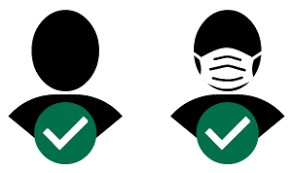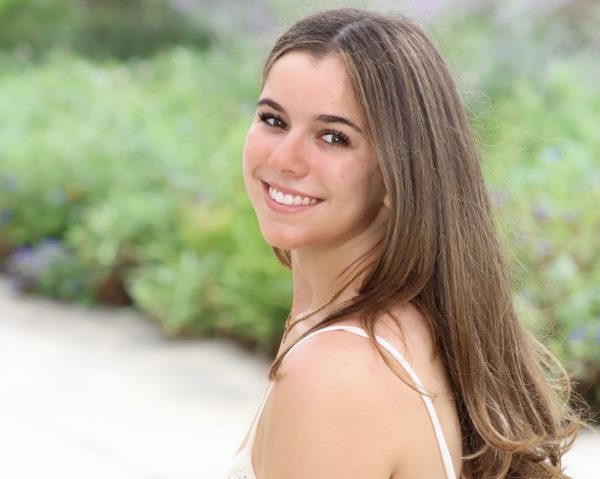The First Few Weeks of Mask-Optional: A Discussion with Mr. Weinstein

On the last day of February, LMSD students were finally allowed to walk the school hallways maskless. Although many adults and teenagers have been waiting for this day, others do not favor the adjustment. Lower Merion has been following the CDC guidelines, so when the district found that they were in the safe zone to allow optional masking, Mr. Weinstein sent an email informing each student and teacher of this recent change.
The CDC last week announced it no longer recommends mask requirements for schools in communities with low to medium risk of COVID-19 spread and severity at the community level. Mr. Weinstein explained in his email, “[t]he metrics used to determine a community’s level are the percentage of hospital beds being used for COVID-19-positive patients, new COVID-19 hospital admissions, and the total number of new COVID-19 cases in an area.” Currently, roughly 70% of the U.S. population lives in counties where the community level is low to medium. Mr. Weinstein shared that, “there are some districts that certainly moved quicker through loosening restrictions than others,” but the amount of time other communities took to loosen restrictions was based on their Covid data. The average change in COVID-19 case rates was lower among counties with school mask requirements (16.32 per 100,000/day), compared with counties without school mask requirements (34.85 cases per 100,000/day).
I had the chance to interview our Harriton principal, who is relieved to see smiling faces once again. “We can’t see people fully smile and that is a really big part of communication that has been lost for two years…I think that will help community building and students’ overall well-being and happiness so that I’m thrilled about.” Mr. Weinstein answered questions about his stance on this new mask directive, where he sees it going in the future, and any opposition he has encountered.
Mr. Weinstein explained that his stance on masks has been consistent since the beginning of Covid, which is following what the CDC recommends. “My personal stance is in alignment with what the district did in following the guidance of the health care professionals.” Additionally, he elucidated that he has “separated [him]self from the decision-making part of the district, that is up to the school board and the superintendent.”
Mr. MacNichol, a Harriton biology and chemistry teacher, also explained how he made his mask decision. “First, I consider the impact on my household. Every member of my household is as vaccinated and/or boosted as they are eligible to be. We are fortunate that we do not have any high-risk individuals, which was evident when the coronavirus came to our house over the winter…If I had more vulnerable members of my household, I would likely wear a KN95 mask to work to protect that family member, but given the low-risk nature of my young and largely healthy family, this does not seem necessary.”
Mr. Weinstein disliked the much-needed nagging in the halls as well; “there is always this tension of wearing masks properly…and it’s a relief to walk around to both see smiles and also not feel responsible for pointing to my nose.” Even though Mr. Weinstein loves being able to see students’ true expressions, he has also held the important responsibility of making sure students protect themselves and other people during Covid-19. “We didn’t wish to have anyone’s face covered, and it’s not an enjoyable tension.”
Zoom was another obstacle that blocked the connection between students and teachers, due to the online aspect complicating communication. When I asked him how Covid might affect online classes in the future, Mr. Weinstein shared that the chances of going back to a hybrid or online environment are low. Currently, the only exception to going online is if a student has Covid-19, or they are out for a specific period.
Schools have realized the difficulty teachers encounter when having to split their lessons between kids in school and online, so the school board is trying to limit the usage of Zoom for teaching. However, the district is prepared to use Zoom in the future rather than missing more school due to snow days. We have already used up the allotted days off for non-snow day events. Additionally, since the start of the coronavirus, people have begun to leave the teaching field, and there has been less interest in going into a teaching career. This causes schools around America to lack in finding teachers, which “lowers the quality and talent pool” of the teaching.
On the LMSD Instagram, a post shared the new mask-optional directive in the district. On that post and several others, there are comments both refuting and applauding the enforcement. One account responded to the Instagram post with, “this is a bad idea.” Meanwhile, another account retweeted a Twitter post saying, “First time in two years my kids can go to school without masks. Let’s keep this progress to normalcy for kids moving forward.”
Mr. Weinstein clarified the opposition he has seen in the community. “It’s been less polarizing in our community than the many other communities you’ve seen on the news.” He “feel[s] fortunate that we felt way more support than backlash.” There has been a small amount of backlash in the school in reaction to this decision, and it is mostly expressed in school board meetings. Overall, Mr. Weinstein has “felt way more support than criticism.”
“Many people have had an issue with changing guidance. Changing guidance never really bothered me, it was a novel coronavirus, meaning it was new and we haven’t dealt with it before.” He shared that he thinks the future of the pandemic will have scientists continuing to learn and study this virus, and he would like to think that we will learn how to live with it better.
Again, Mr. MacNichol shares, “[m]ask mandates were useful and necessary to slow this spread when we had no other defenses; however high community vaccination rates, prior infection, and the antiviral medications now at our disposal are much more effective tools. This is why the CDC has correctly tied its mask recommendations to community hospital usage. Since our community hospitals fall in the low category, mask usage for the greater good of the community does not seem warranted at this time.”
Mr. MacNichol agrees that although mask mandates were needed to keep the community safe, the CDC has made the correct decision to allow students not to wear their masks. Since he and his family are not at risk of contracting the virus, he is happy to roam the hallways mask-free.
Both Mr. Weinstein and Mr. MacNichol are ecstatic about the last maskless months of the school year and are glad to see only little backlash thrown at the school district due to this new directive. Mr. Weinstein can walk through the hallways without instructing students to fix their masks, and he is also happy with the decreased amount of needed zoom sessions in the past year due to the challenge it holds on teachers.

Sasha is a senior who is ecstatic to spend her fourth and final year writing for the Banner as Business Editor. When she is not writing, Sasha fills her...

